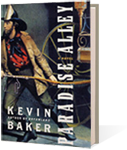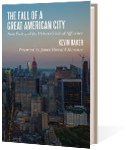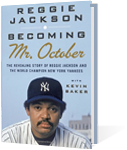By Kevin Baker
Little Indian kids on a bridge up in Canada They can
balance and they can climb Like their fathers before them
They’ll walk the girders of the Manhattan skyline…
—Joni Mitchell, “Song for Sharon”, Hejira
In 1886, the Dominion Bridge Company set out to build a cantilevered bridge over the St. Lawrence for the Canadian Pacific Railroad. The bridge would be set partly on the reservation of the Kahnawake and Akwesasne Mohawks. In exchange, the Mohawks demanded jobs on the project. Dominion Bridge agreed—assuming that the Mohawks would unload box cars, and perform other menial tasks. Instead, the Indians climbed all over the bridge, “as agile as goats,” asking if they could try riveting. As one company official later wrote, “It was quite impossible to keep them out.” Indeed, “As the work progressed, it became apparent to all concerned that these Indians were very odd in that they did not have any fear of heights.”
Dominion Bridge trained a dozen or so Mohawks as riveters—a difficult, dangerous skill that entailed heating rivets until they were red-hot, tossing them thirty to forty feet through the air, then catching and forcing them through steel beams with a hammer, or a pneumatic drill—all of this some 500 feet or more above the ground.
Soon there were 70 iron and steel riveters in the Kahnawake band, working projects throughout Canada. The “Caughnawagas”—as whites first called them—had always proved adroit at adapting to the vagaries of capitalist culture. They thrived as guides for French fur trappers, raft riders for lumber companies, circus performers—even patent medicine salesmen.
Then, in 1907, came “the disaster”—the collapse of the Quebec Bridge, killing 96 workers in all, 35 of them Indians. The tragedy might have ended Mohawk participation in high steel right there; instead, it made Mohawk boys determined to become steelworkers—and Mohawk women determined that they would never work one job again in such concentrated numbers.
The Kahnawake riveting gangs continued to spread out—and by the 1910s they had reached New York. There, they worked nearly all the monumental structures of greater New York: the Empire State Building and the George Washington Bridge; the Chrysler Building and the World Trade Center; the Triborough Bridge, and the Verrazano Bridge, and the Pulaski Skyway and the West Side Highway.
By the 1930s, a community of 700 Mohawks was living in the old North Gowanus neighborhood of Brooklyn. Local Italian groceries carried the Mohawks’ favorite brands of corn meal, and the riveters drank Canadian beers at the Spar Bar and Grill, and the Wigwam, with its picture of Jim Thorpe on the wall, and the sign “The Greatest Iron Workers in the World Pass Thru These Doors.” Rev. Dr. David Munroe Cory, of the Cuyler Presbyterian Church, even translated the Gospel of St. Luke into the Mohawk-Oneida language, and held monthly services in that tongue.
The community’s center remained along the St. Lawrence. When they were working on a job, Mohawk steel workers might make the twelve-hour trip up there from the city on Friday nights, returning on Sunday nights—often driving at breakneck speeds, fueled by alcohol. They always received a joyous reception on the reservation, and the gypsy-like nature of their work seemed to hold a great appeal. They would drive on, all over the United States—even arriving in time to help rivet together the Golden Gate Bridge.
What made the Mohawks such superb high steel workers remains something of a mystery. The legends assumed some kind of genetic advantage, but there is little evidence of this. Joseph Mitchell, in his scrupulous New Yorker article, “The Mohawks in High Steel,” thought Kahnawake children in Brooklyn “have unusual manual dexterity; by the age of three, most of them are able to tie their shoelaces”—but Kanatakta, Executive Director of the Kahnawake Community Cultural Centre, suggests that it’s more “a question of dealing with the fear.”
The Mohawks were able to deal with the fear—but not the changes in the construction industry. By the late 1960s, riveting had all but disappeared. The Brooklyn community dissolved, too, as crime rates rose.
The lure of high steel work, though, would not so easily dissipate—not in a community where the graves of men who died on the job are marked with steel-girder crosses. By the 1990s, some 20-25 percent of Mohawk men were in steel construction again—and dozens of them were living in New York.
The demand will always be there. As Mitchell quotes the Dominion Bridge official: “Men who want to do it are rare and men who can do it are even rarer…”
American Greats Edited by Robert A. Wilson & Stanley Marcus
Public Affairs Press, a member of the Perseus Group









